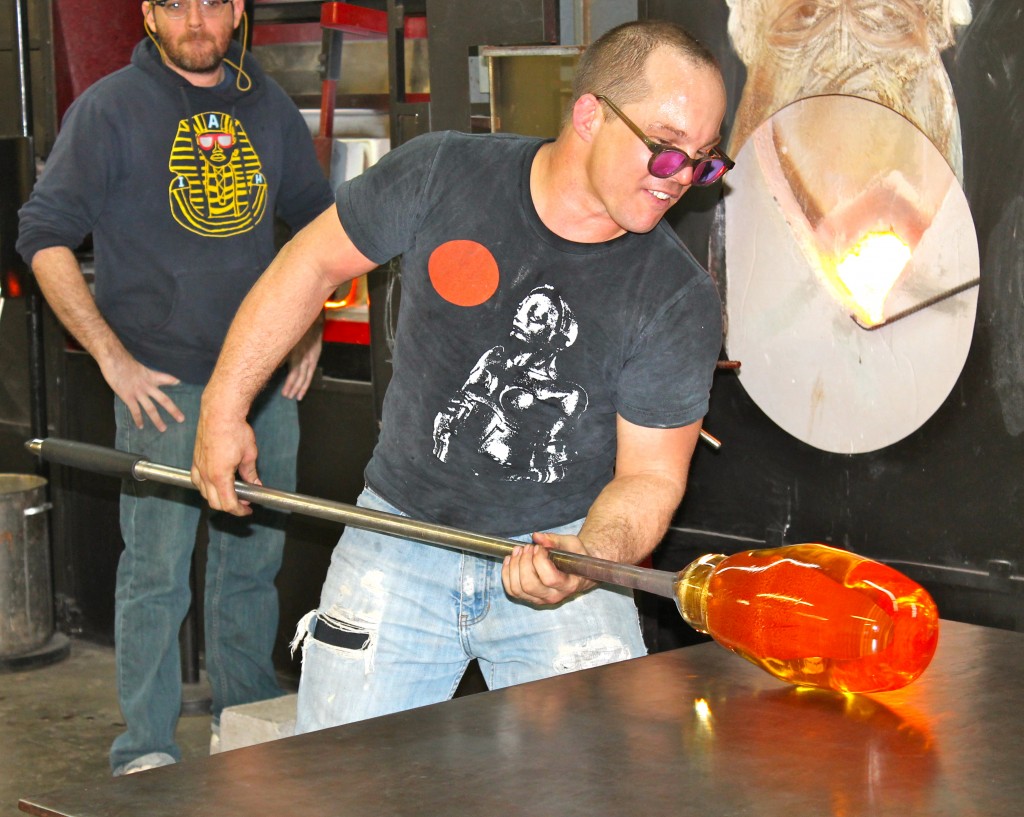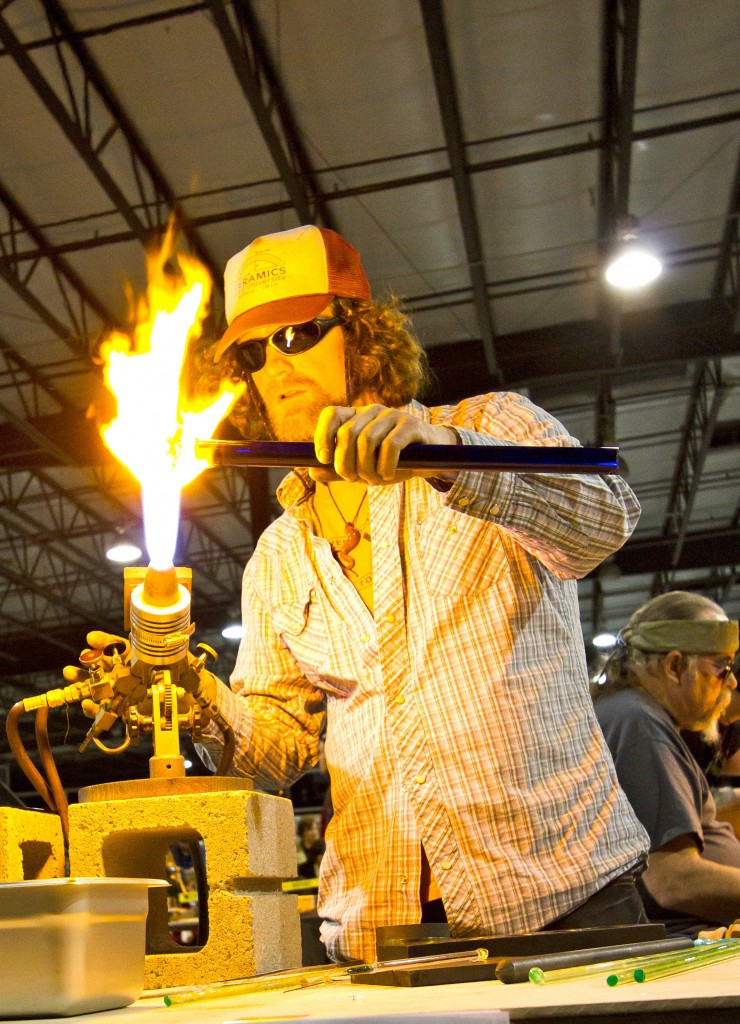Glass artist Tom Philabaum on living with a "cruel mistress", and a mishap with a horse.
Are you an early bird or a night owl? "An early bird, totally. I used to be a musician but I always thought the musician's life was never for me because I couldn't stay up late. I have wine with dinner and read a book and go to bed at 9 o'clock.
I like being the first one up in the morning and out in the dark of the morning. I swim six or seven days a week at the YMCA downtown, or in one of the City pools, and I have a regimen of yoga and calisthenics. I come here to the studio at 5am, go to the Y at 6am, and I'm back here at 8am."
Favorite accessory? "My bike. Unless I have to go pick up supplies, I ride my bike all over downtown. It gives me freedom and the ability to create new routes. I like going down alleys and checking things out."

Part of Tom’s Precarious Rock sculpture series, featuring individually blown rocks that are cut, polished, and joined with adhesives. Photo by Gillian Drummond
Favorite faux pas? "I was invited to be guest artist at the Littleton Studios for two weeks, in North Carolina. They had brought someone in to be my assistant, a young lady of about 22 or 23.
"On the night before we were due to start, she told me she was an equestrian and that she'd noticed there was a big black stallion in the field next to me. She said would I jump the fence and help her mount him.
"It was dinner time and I'd had a little bit of wine, so I helped her get on the horse. She had a halter in her car, but she was riding bareback. She came back from the ride and said 'Your turn.' I said 'You're crazy, I can't do that!' She said 'Chicken' and I went 'All right then'. The little boy in me came out and I jumped up on the horse. I've had two back surgeries and my right leg is atrophied so I'm sliding to one side, and before long I was perpendicular. I fell off and landed on my shoulder, on the arm with my drawing hand.
"I had two weeks of massage and herbal remedies and somehow I pulled through that two weeks. But when I got back to Tucson I had to have surgery on my shoulder. I was the fool."
Dream client? "Anyone with an unlimited budget. I like doing major installations and I would love to do a project that would take me a year of planning and execution. Right now I'm working on an installation for the Pima County Administrator's building. It's an effect called 'dalle de verre' (French for tile over glass). There will be a glass sunset on the west side and a sunrise on the east side of the building."
If I weren't a glass artist I would..."Want to be a painter because I like pushing paint around on surfaces. I have a painting studio at home where I do sketches, and for 20 years I was in a drawing group. We met every Tuesday night. Then people started moving away and it disbanded. That was a sad day for all of us.
"But I don't have the drive to be a painter. And somehow it's been decided by a higher power that I use this medium of glass. I've been seduced by glass. When I travel the world in my role as a glass artist, I find people doing things with glass I've never thought of. The material itself is so flexible, so plastic, the possibilities are endless. But it can burn you and cut you. It's a cruel mistress."
If I could change one thing I would..."Eliminate guns. I was blessed to have a father who was not interested in hunting. I think guns have no place in society other than for protection or securing the safety of others. I don't know how the NRA can say they'll get rid of everything that Obama has proposed in the light of what's just happened in Connecticut - little children being killed."
Philabaum Glass Studio & Gallery is at 711 South 6th Avenue. Cast & Cut, a show featuring glass artists Mark Abildgaard and Michael Joplin, runs February 2 to April 13.










![IMG_1042[1]](https://3storymagazine.com/wp-content/uploads/2013/01/IMG_10421-1024x682.jpg)



![IMG_0923[1]](https://3storymagazine.com/wp-content/uploads/2013/01/IMG_09231-1024x817.jpg)
![IMG_0906[1]](https://3storymagazine.com/wp-content/uploads/2013/01/IMG_09061-1024x682.jpg)

![IMG_0909[1]](https://3storymagazine.com/wp-content/uploads/2013/01/IMG_09091-1024x682.jpg)




























